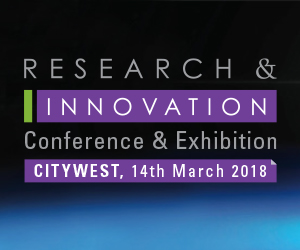SOLAR-H2 project – Bright future for solar fuels

The EU-funded SOLAR-H2 project has established a pan-European research network that is tapping into the potential of solar fuel that could one day replace fossil fuels because it’s a clean energy source.
Relying on fossil energy sources such as oil, gas and coal is no longer viable given finite supplies and the consequences of CO2 emissions for the planet. The EU-funded SOLARH2 project responded by bringing together experts to examine how to exploit our unlimited supply of water and solar energy instead.
“Everybody has heard of solar power, but this only concerns electricity,” explains project coordinator Professor Stenbjörn Styring from Uppsala University, Sweden. “The challenge to replace fossil fuels with something cleaner is about four times bigger, whichever way you look at it. This is the issue we all have to face up to and address.”
Taking a shine to novel energy solutions
Scientists have known for a number of years that splitting water can produce huge amounts of hydrogen in an environmentally friendly way. The problem has been in understanding the highly complicated electrochemical processes involved. But thanks to cross-border and cross-disciplinary scientific cooperation, the SOLARH2 team was able to design synthetic compounds able to mimic biological molecules that convert energy from the sun into hydrogen fuel. Scientists also made progress investigating the use of bacteria and algae in bioreactors to perform the same conversion.
“One key breakthrough early on was the discovery of the best catalyst – a particular enzyme – for making hydrogen,” says Styring. “Today we have developed much more efficient synthetic catalysts, but this was an important milestone along the way. Indeed, as the project has evolved the focus has slowly shifted onto synthetic biology, where we are trying not only to learn from, but to improve on nature.”
Styring said that the move into synthetic biology is important because it opens up possibility of one day developing and commercialising more tailored products, such as butanol to make diesel. Styring’s team at Uppsala University is currently working on growing microorganisms actually inside a fuel tank, which they hope might prove to be an efficient and low-impact method of generating fuel.
“This is how science progresses,” says Styring. “We brought together chemists, spectroscopists and biologists. Hundreds of papers have been written, and many young professors now making names for themselves in the field have come through the SOLARH2 network.”
A centre of perception
The four-year project, which was completed in 2012, has also helped to establish Uppsala University and its Swedish Consortium for Artificial Photosynthesis as a European hub of excellence. The first International Conference on Solar Fuels was held at the University , something that Styring believes happened as a direct consequence of SOLARH2’s profile. This biannual conference, which will be rotated between organisers around the world, will bring together scientists working on both biological and chemical approaches to utilise solar energy for direct fuel production, and very much carries on the project’s spirit of cross-border cooperation.
Ultimately, the work initiated by SOLARH2, the networks it has created and the opportunities identified in developing biological and synthetic solutions will lead to larger, more high-impact hydrogen fuel projects in the future.
“One thing we learned from this project is that viable forms of solar fuel will be difficult to achieve,” says Styring. “But they will come. There is no doubt about this. I would guess that within the next decade we will begin to see small, inefficient solar fuel solutions entering the market, which can then be improved upon.”
GÉANT is the pan-European data network for the research and education community. It interconnects national research and education networks (NRENs) across Europe, enabling collaboration on projects ranging from biological science to earth observation and arts & culture.







